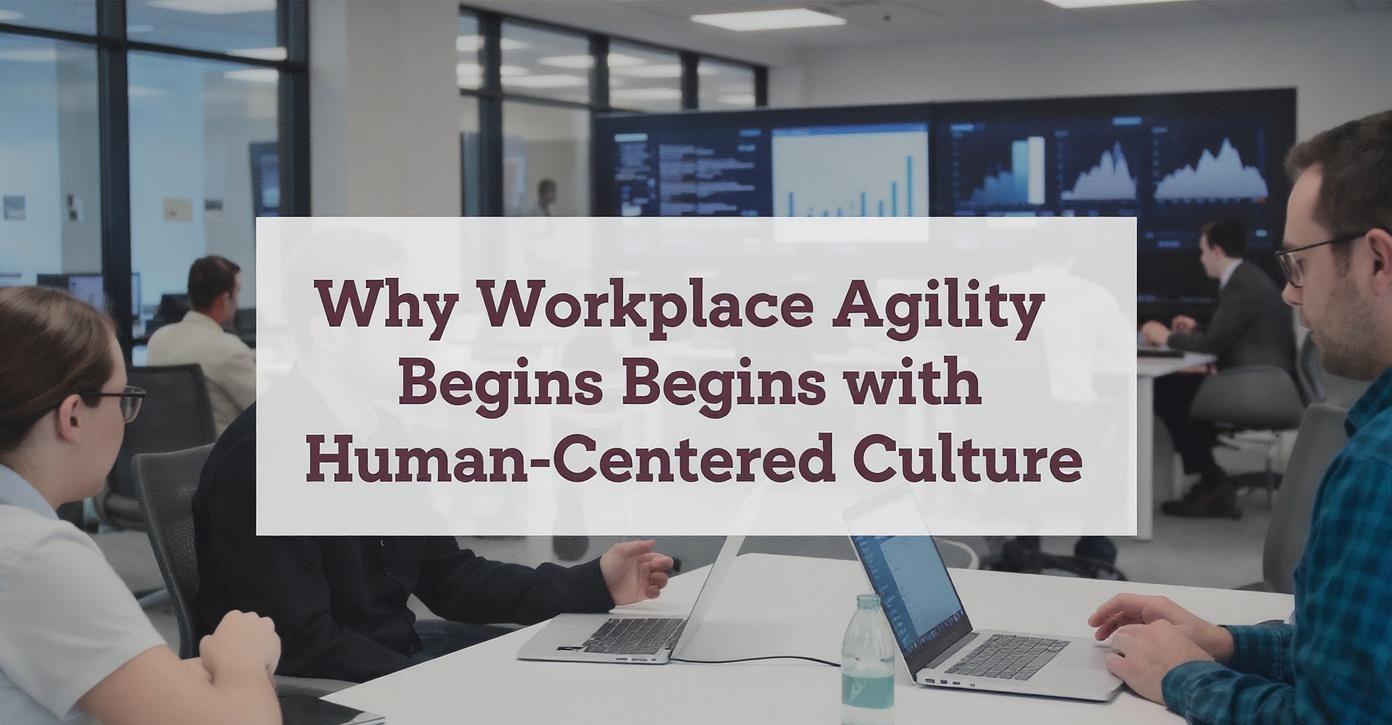How Human-Centered Culture Drives Workplace Agility in Modern Businesses

In today’s fast-paced business environment, organizations face constant change from market dynamics, technological advancements, and evolving employee expectations. Amid these challenges, the need for workplace agility has never been greater. Agile organizations can quickly adapt, respond, and innovate, giving them a competitive edge. Yet, true agility is not just a matter of processes or tools; it starts with people. This is why workplace agility begins with Human-Centered Culture. By prioritizing employees’ well-being, engagement, and empowerment, organizations create the foundation for flexible, responsive, and innovative operations.
Understanding Workplace Agility
Workplace agility is the ability of an organization to pivot strategies, processes, and structures swiftly in response to internal and external changes. Agile companies are known for adaptive leadership, empowered teams, and collaborative decision-making. However, agility is not solely about adopting frameworks like Scrum or Lean. It is deeply tied to culture—specifically, a culture that places humans at the center of organizational design.
Without a human-centered approach, organizations may have agile processes on paper but struggle with slow decision-making, employee disengagement, or resistance to change. A culture that prioritizes people ensures that employees are motivated, collaborative, and ready to embrace new challenges—key drivers of workplace agility.
Defining Human-Centered Culture
Human-centered culture focuses on valuing employees as individuals, fostering psychological safety, and enabling autonomy. It promotes trust, empathy, and open communication, allowing employees to share ideas, innovate, and take initiative without fear. This culture is built on recognizing the unique strengths of each employee and providing opportunities for growth, learning, and meaningful contribution.
Organizations that embrace human-centered practices create workplaces where employees are motivated to perform at their best. This empowerment translates into faster problem-solving, improved adaptability, and stronger engagement—core elements of agile organizations.
The Connection Between Human-Centered Culture and Agility
The reason workplace agility begins with human-centered culture is simple: employees are the driving force behind change. When people feel valued and supported, they are more likely to take initiative, collaborate across teams, and respond effectively to uncertainty. A human-centered culture provides the psychological safety necessary for experimentation, innovation, and rapid decision-making.
Empowering Decision-Making
Agility requires decentralization of decision-making. Teams must be trusted to act independently and make informed choices. In a human-centered culture, leaders empower employees with the authority, resources, and clarity to make decisions aligned with organizational goals. This approach accelerates responsiveness and reduces bottlenecks that slow down agile processes.
Enhancing Collaboration and Communication
Agile workplaces depend on seamless collaboration. Human-centered organizations encourage transparent communication and active listening, creating an environment where knowledge is shared freely, problems are discussed openly, and solutions are co-created. Employees in such cultures feel confident contributing ideas, which drives innovation and agility.
Fostering Continuous Learning
Adaptable organizations invest in employee growth. Human-centered culture emphasizes continuous learning, skill development, and professional advancement. Employees equipped with new skills are better prepared to pivot, innovate, and contribute to changing business needs. Continuous learning ensures that agility is sustainable, not just a reactive response.
Practical Strategies to Build Human-Centered Culture
Implementing human-centered culture requires deliberate actions and policies. Organizations should:
Prioritize Employee Well-Being: Promote work-life balance, mental health support, and flexible work arrangements.
Encourage Participation in Decision-Making: Include employees in strategy planning and operational improvements.
Recognize and Reward Contributions: Celebrate achievements to reinforce motivation and ownership.
Develop Leadership Skills: Train leaders in empathy, active listening, and coaching to model human-centered behavior.
Real-World Examples of Agility Through Human-Centered Culture
Leading companies demonstrate that workplace agility begins with human-centered culture. In technology firms, employee-centric policies have enabled rapid product innovation and process optimization. In healthcare, organizations with human-centered practices have empowered staff to make real-time decisions, resulting in improved outcomes. These examples highlight that agility is not just operational; it is cultural.
Technology as an Enabler
While culture drives agility, technology complements it. Collaboration tools, data platforms, and digital communication systems enable teams to work efficiently and respond quickly. However, technology alone cannot achieve agility. It requires a culture where employees are motivated and empowered to use these tools creatively to address challenges and innovate.
Measuring the Impact
To assess the effectiveness of human-centered initiatives, organizations can track metrics such as employee engagement, retention, innovation output, and responsiveness to change. Feedback surveys, performance data, and project outcomes provide insights into how culture influences agility and highlight areas for continuous improvement.
Leadership’s Role in Driving Human-Centered Agility
Leaders are central to cultivating a human-centered culture. They must model behaviors that value employees, encourage open dialogue, and foster collaboration. Empathetic and transparent leadership helps embed human-centered principles across the organization, ensuring that agility is a shared responsibility, not just a top-down directive.
Overcoming Challenges
Transitioning to a human-centered culture is not without obstacles. Common challenges include:
Short-Term Performance Focus: Immediate results may overshadow long-term cultural initiatives.
Fragmented Alignment: Without consistent messaging, efforts may not take hold.
Limited Leadership Support: Human-centered approaches require ongoing investment in coaching, mentorship, and employee engagement.
Addressing these challenges requires clear communication, consistent leadership actions, and a commitment to aligning culture with organizational strategy.
The Strategic Advantage
Organizations that embrace human-centered culture gain a strategic edge. By understanding why workplace agility begins with human-centered culture, businesses can build resilient teams, improve employee satisfaction, and foster innovation. Human-centered practices enhance adaptability, enabling companies to respond to change proactively rather than reactively.
Read Full Article : https://bizinfopro.com/blogs/hr-blogs/why-workplace-agility-begins-with-human-centered-culture/
About Us : BizInfoPro is a modern business publication designed to inform, inspire, and empower decision-makers, entrepreneurs, and forward-thinking professionals. With a focus on practical insights and in‑depth analysis, it explores the evolving landscape of global business—covering emerging markets, industry innovations, strategic growth opportunities, and actionable content that supports smarter decision‑making.
- Art
- Causes
- Crafts
- Dance
- Drinks
- Film
- Fitness
- Food
- Games
- Gardening
- Health
- Home
- Literature
- Music
- Networking
- Other
- Party
- Religion
- Shopping
- Sports
- Theater
- Wellness



